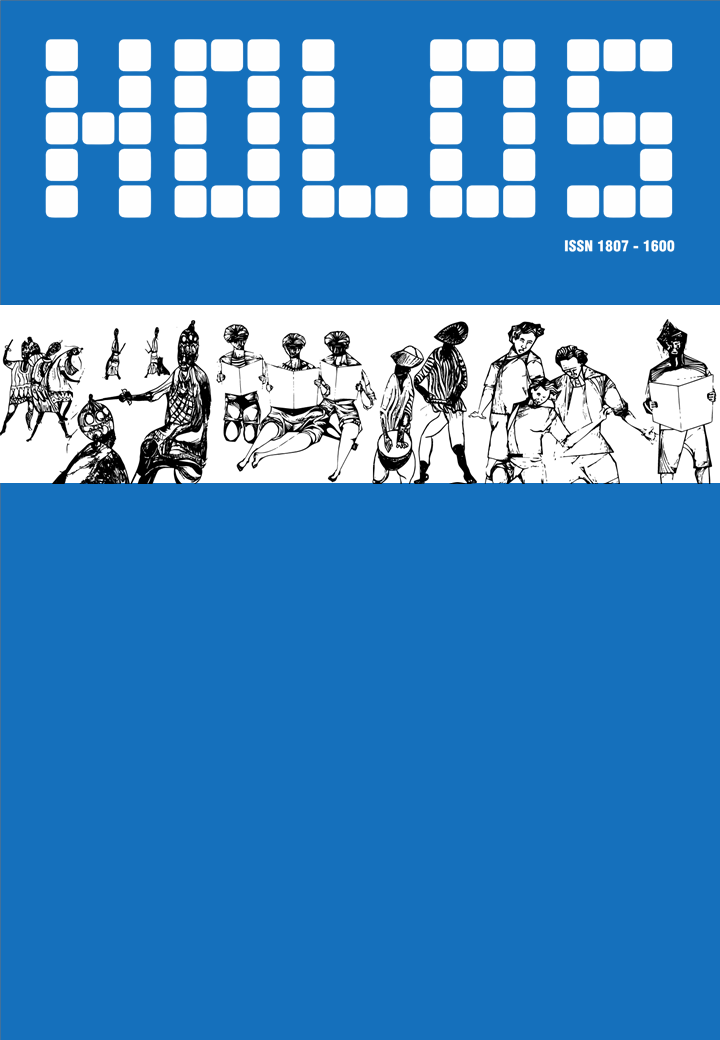THE LABOR MARKET FOR A MINING ENGINEER: A SURVEY OF FORMALLY HIRED EMPLOYEES IN BRAZIL
DOI:
https://doi.org/10.15628/holos.2020.10389Palavras-chave:
Mining Engineering, Labor Market, Formal EmploymentResumo
The number of Mining Engineering courses has increased in Brazil since 2004, resulting in a significant rise in the number of graduates. However, such growth was not followed by an equivalent rise in the number of applications for professional registration as a Mining Engineer with the Regional Engineering Councils, which might indicate a shortage of professional opportunities in the marketplace. This paper addresses the current labor market scenario for mining engineers in Brazil, taking sources of formal employment data as a basis: the Labor Ministry’s CAGED and RAIS employee data systems. It was found that there has been a significant asymmetry between the number of graduates and the number of mining engineers formally registered in the country in recent years. Moreover, the number of mining engineers’ dismissals exceeds the hiring figures as of 2012, in contrast with the previous expansion forecasts in this industry, elaborated in 2010 and 2014, based on which new Mining Engineering courses had been opened.
Downloads
Referências
Caged. (2019). General Register of Employees and Unemployed. MTE. Available from http://trabalho.gov.br/trabalhador-caged
Confea. (2020). Federal Council of Engineering and Architecture: Open Data Source. Available from https://relatorio.confea.org.br/Profissional/ProfissionaisPorTituloeGenero
Confea. (2019). Federal Council of Engineering and Architecture: Request 2019-082. Available from http://transparencia.confea.org.br/sic/
Ibram. (2018). Brazilian Mining Institute. Mineral Economy of Brazil. Available from http://portaldamineracao.com.br/wp-content/uploads/2018/08/economia-mineral-brasil-set2018.pdf
Inep. (2019). National Institute of Educational Studies and Research Anísio Teixeira: Synopsis Statistics of Higher Education. Available from http://portal.inep.gov.br/basica-censo-escolar-sinopse-sinopse
Mec. (2019). Institutions of Higher Education and Registered Courses on the E-mec. Available from http://emec.mec.gov.br/
Melfi, A., Misi, A., Campos., Cordani, U. (2016). Mineral Resources in Brazil: problems and challenges. Rio de Janeiro: Brazilian Academy of Sciences, 2016. Chapter VI, Training of human resources for mining, p. 396-403.
Meneghini, K., Bergerman, M., La Serna, H. (2018). The job market of the Mining Engineer in Brazil: a survey of the workers with formal job registration. In: Brazilian Association of Metallurgy, Materials and Mining, organizer. Proceedings of the 19° Mining Symposium. São Paulo, Brazil. p. 285-295.
Mme. (2010). National Mining Plan 2030. Brasília: MME, 2010. Available from http://www.mme.gov.br/web/guest/secretarias/geologia-mineracao-e-transformacao-mineral/plano-nacional-de-mineracao-2030/pnm-2030
Mte. (2019). Annual Social Information Report: RAIS Yearbook 2003 a 2018. Available from http://bi.mte.gov.br/bgcaged/rais.php
Mte. (2019). General Registry of Employees and Unemployed. Available from http://bi.mte.gov.br/bgcaged
Rais. (2019). Annual Social Information Report. Available from https://ces.ibge.gov.br/base-de-dados/metadados/mte/relacao-anual-de-informacoes-sociais-rais.html
Sanches J., Bergerman M., Roveri C. (2016). The expansion of higher education in Brazil: A diagnosis of courses in Mining Engineering. In: Brazilian Association of Engineering Teaching, organizer. Proceedings of the XLIV Brazilian Congress of Engineering Education;
Silva, A., El Hajj, T.; Rusilo, L. (2020, May). Analysis of Brazilian and foreign mining legislation. Holos, [S.l.], v. 3, p. 1-12. ISSN 1807-1600. Available from http://www2.ifrn.edu.br/ojs/index.php/HOLOS/article/view/9460. DOI:https://doi.org/10.15628/holos.2020.9460.
Souza, K., Domingues, E. (2014). Mapping and Projection of Demand by Engineers by Category. Research and Economic Planning. Available from http://ppe.ipea.gov.br/index.php/ppe/article/view/1522/1153
Souza, A. (2017). Diagnosis of the Mining Engineer's Profession in Pará. Marabá: Mining Engineers Association of Pará
Marabá (2020). University of Ouro Preto: Graduation – Presentation and Distance Learning Data Report. Available from http://dados.ufop.br/dataset/graduacao-diplomados
Yiqun M. (2013). Iron ore spot price volatility and change in forward pricing mechanism. Available from https://doi.org/10.1016/j.resourpol.2013.10.002









































